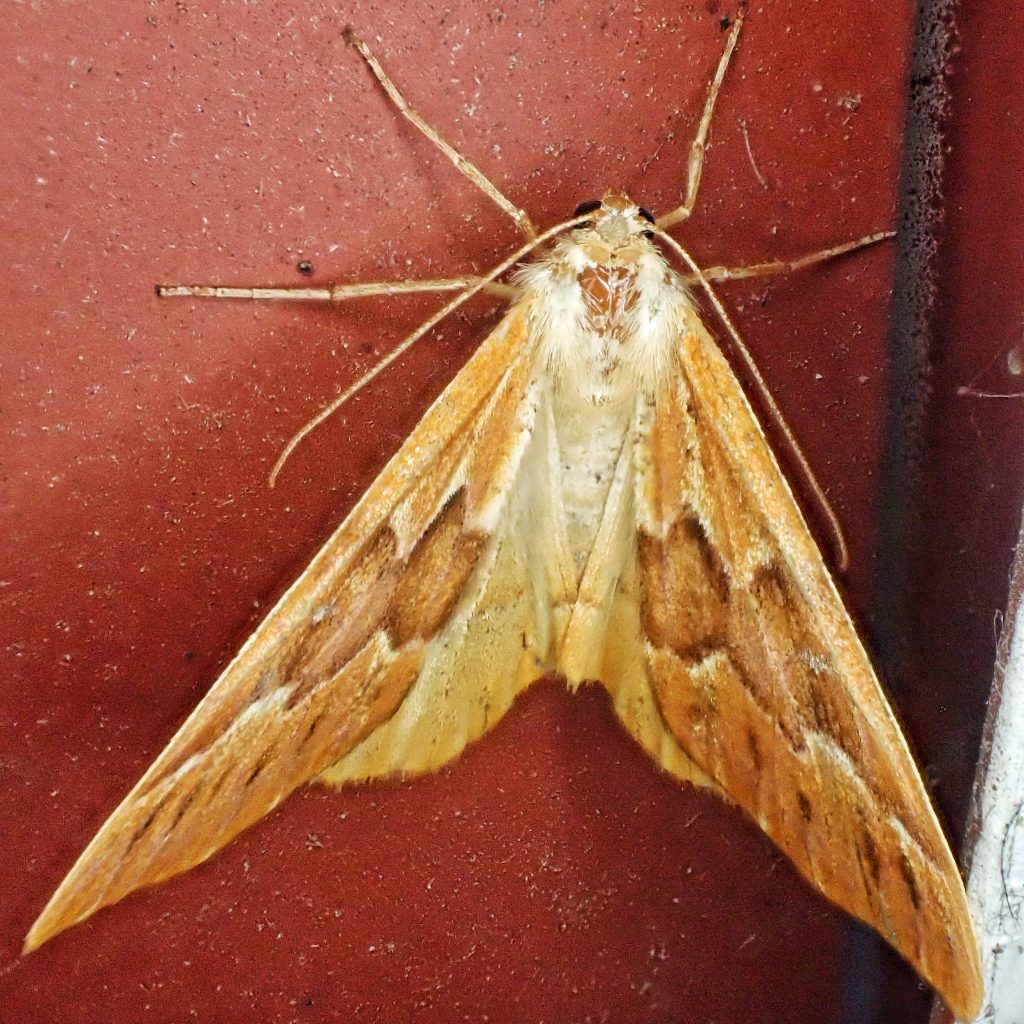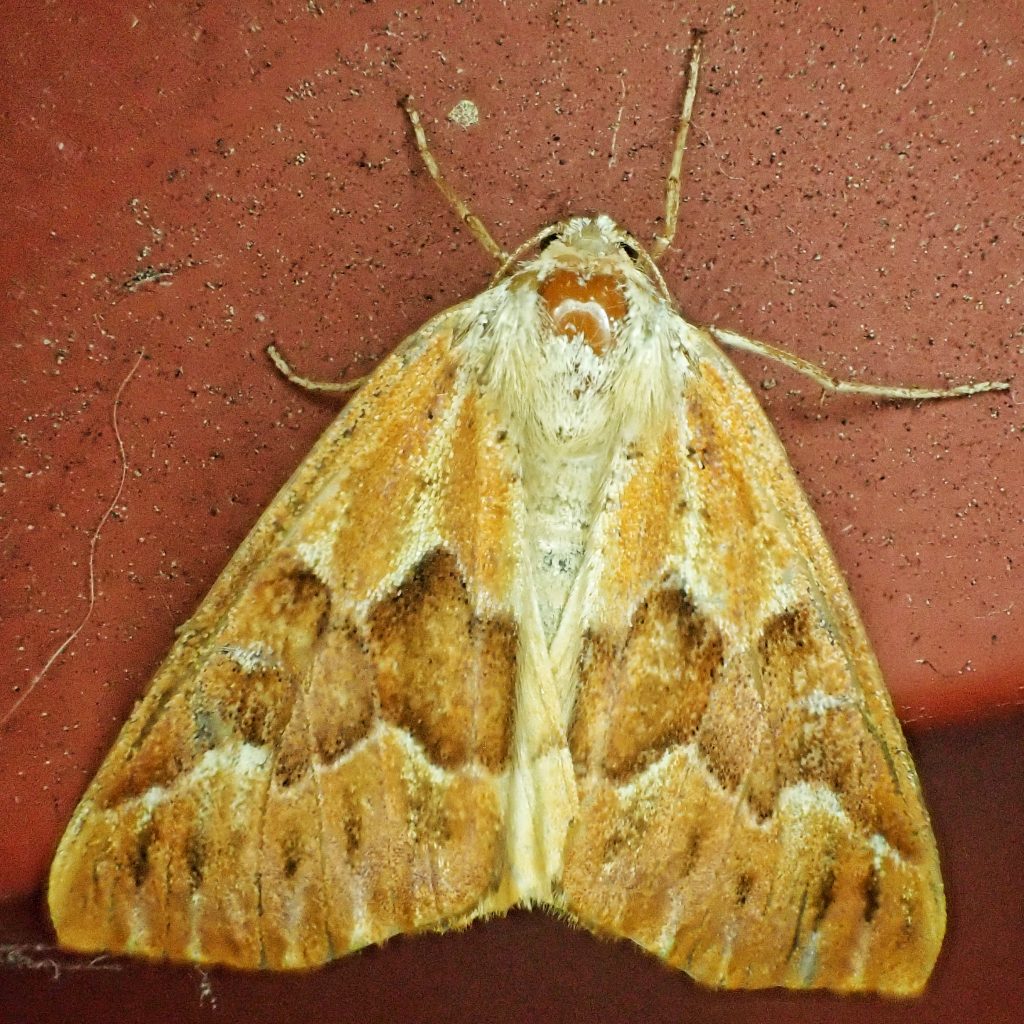
I am quite fond of these pretty Geometrid moths, but I don’t see them nearly as often as I’d like to, and I didn’t really understand why until I did the research for this profile. It seems they tend to be a late summer/fall moth, and I’ve often moved on to other arthropod orders by that time. So it was a treat that I seemed to get at least one, and sometimes 2 or 3, every night running lights whilst house sitting for my sister-in-law in the West Hills of Portland. They were oddly spooky though, and seldom let me get more than one photo of them before they flew away, although they often settled down again fairly close by.
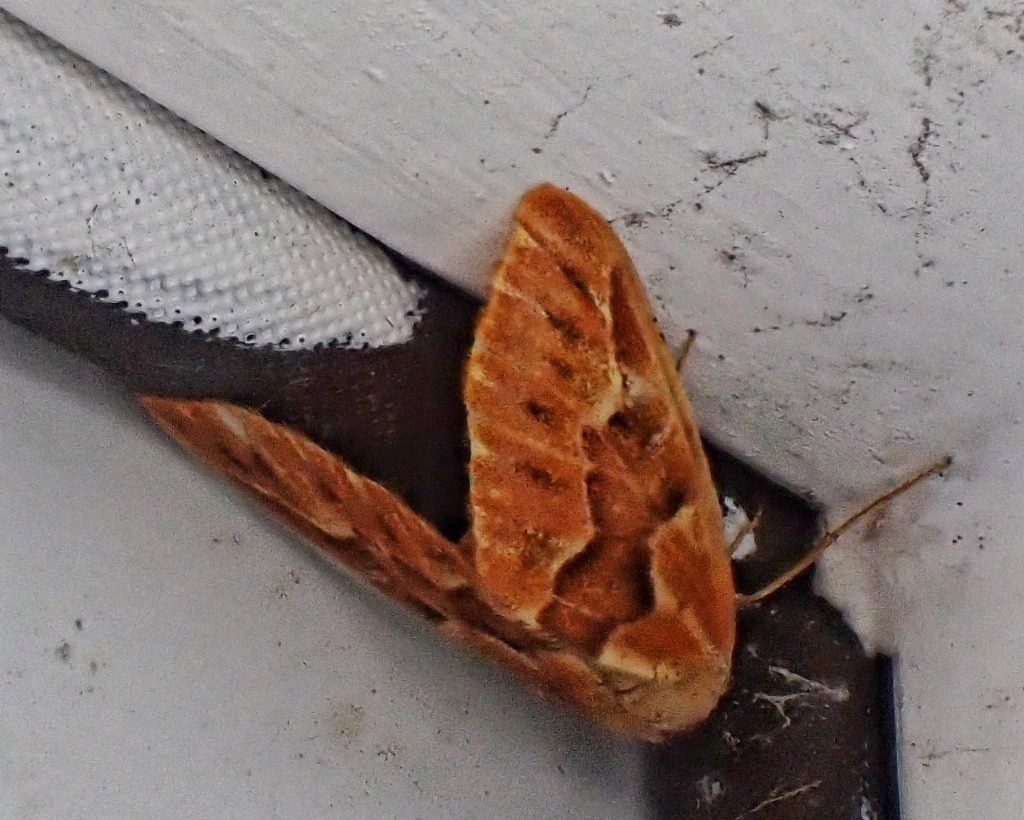
Description– “Wingspan 34-42 mm. Forewing length 17-20 mm…Adult – forewing reddish-brown with jagged AM and PM lines, pale yellowish discal spot, and prominent orange arrow-shaped streaks in subterminal area. Hindwing whitish basally with diffuse pale yellow streaks radiating distally.” Species Caripeta aequaliaria – Red Girdle – Hodges#6865 – BugGuide.Net; “Mature larva up to 42 mm long. This species has two distinct morphs. The colour of the more common morph is highly variable, ranging from dark brown to pale grey. In this morph, the head is pale grey with dark markings on each lobe; the body is elongate with the dorsum of each abdominal segment marked with a pair of dark spots in the anterior third (not distinct in light coloured variant) and a pair of dark D-shaped markings near the posterior margin. The second distinct morph is rusty brown and has a broken middorsal creamy yellow stripe and prominent yellow lateral spots.” <em>Caripeta aequaliaria</em> Grote
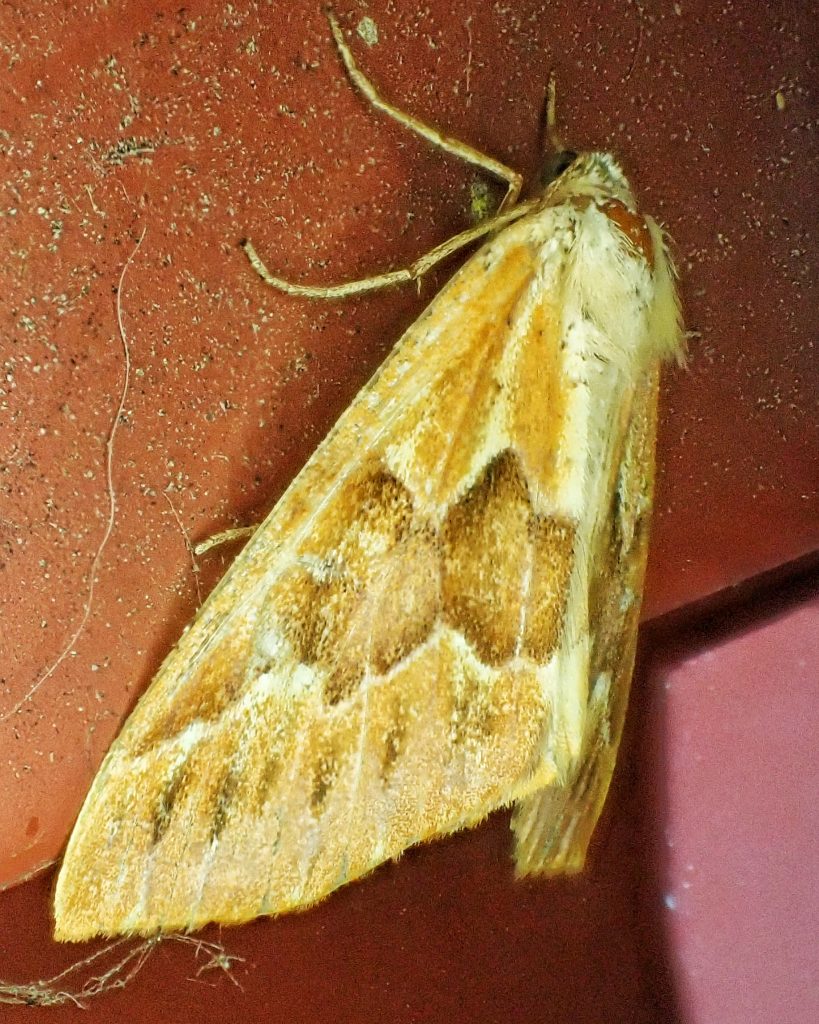
Similar species– Caripeta divisata (Grey Spruce Looper Moth) has greyish brown medial band, larger and more well discal spot, and more white bordering the medial band; C. angustiorata has a relatively smooth post medial line and an L-shaped antemedial line, and is only found in the northern Rockies and associated ranges and foothills.
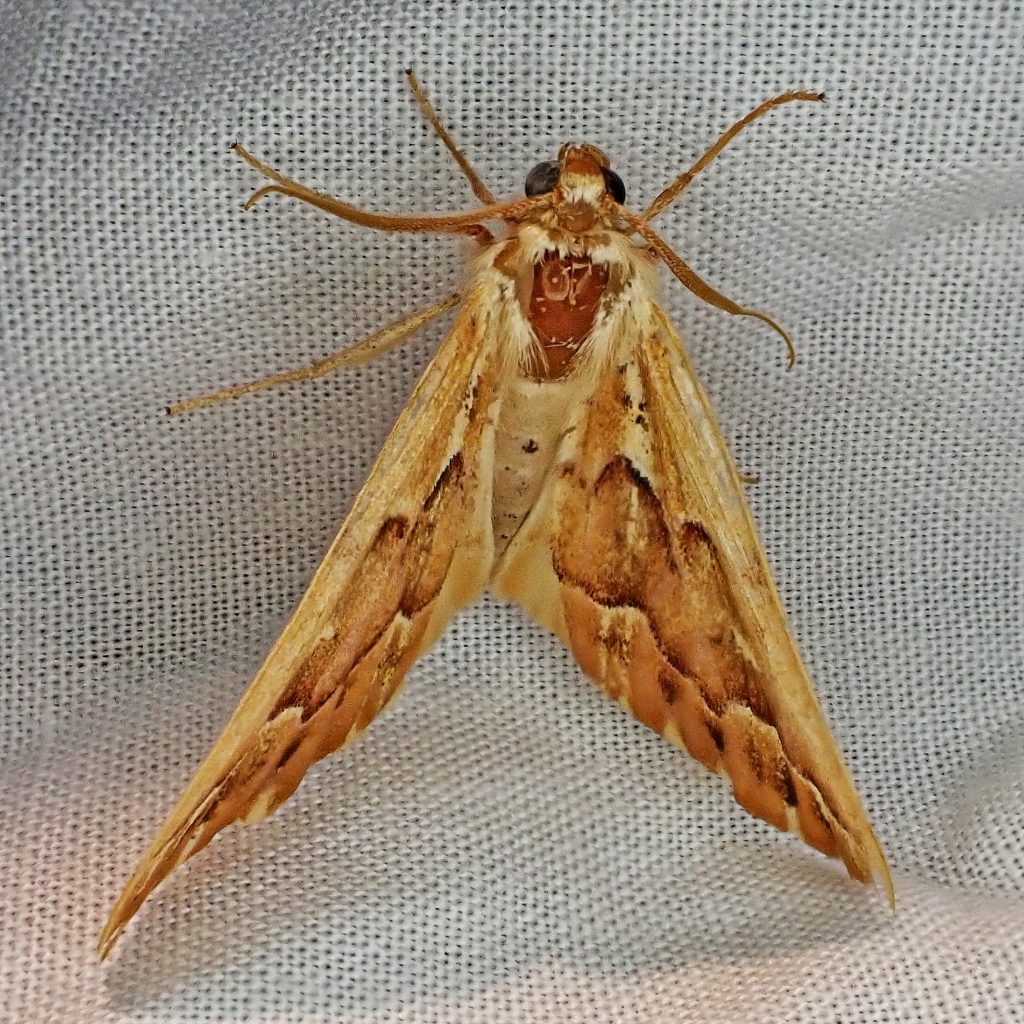
Habitat– “Coastal and mountain coniferous forests.” Species Caripeta aequaliaria – Red Girdle – Hodges#6865 – BugGuide.Net
Range– “A western species, occurring from southern BC and westernmost Alberta southward.” Caripeta aequaliaria – University of Alberta Museums Search Site; found region wide in the PNW in appropriate habitat.
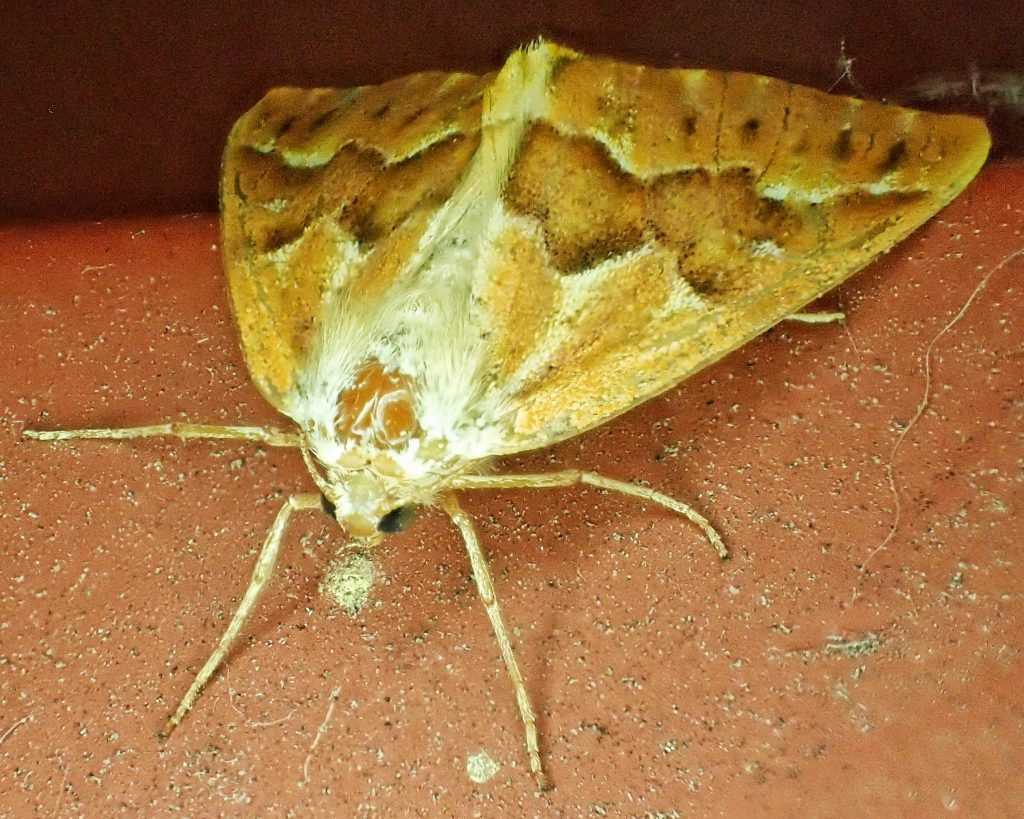
Eats– “Larvae feed mainly on [needles of] Douglas-fir, Lodgepole Pine, Ponderosa Pine; other hosts include Western White Pine, Western Hemlock.” Species Caripeta aequaliaria – Red Girdle – Hodges#6865 – BugGuide.Net
Eaten by– Presumably a host for parasitoids in Hymenoptera and Diptera, and probably preyed upon by insectivores of all classes, but I can find nothing specific for this species.
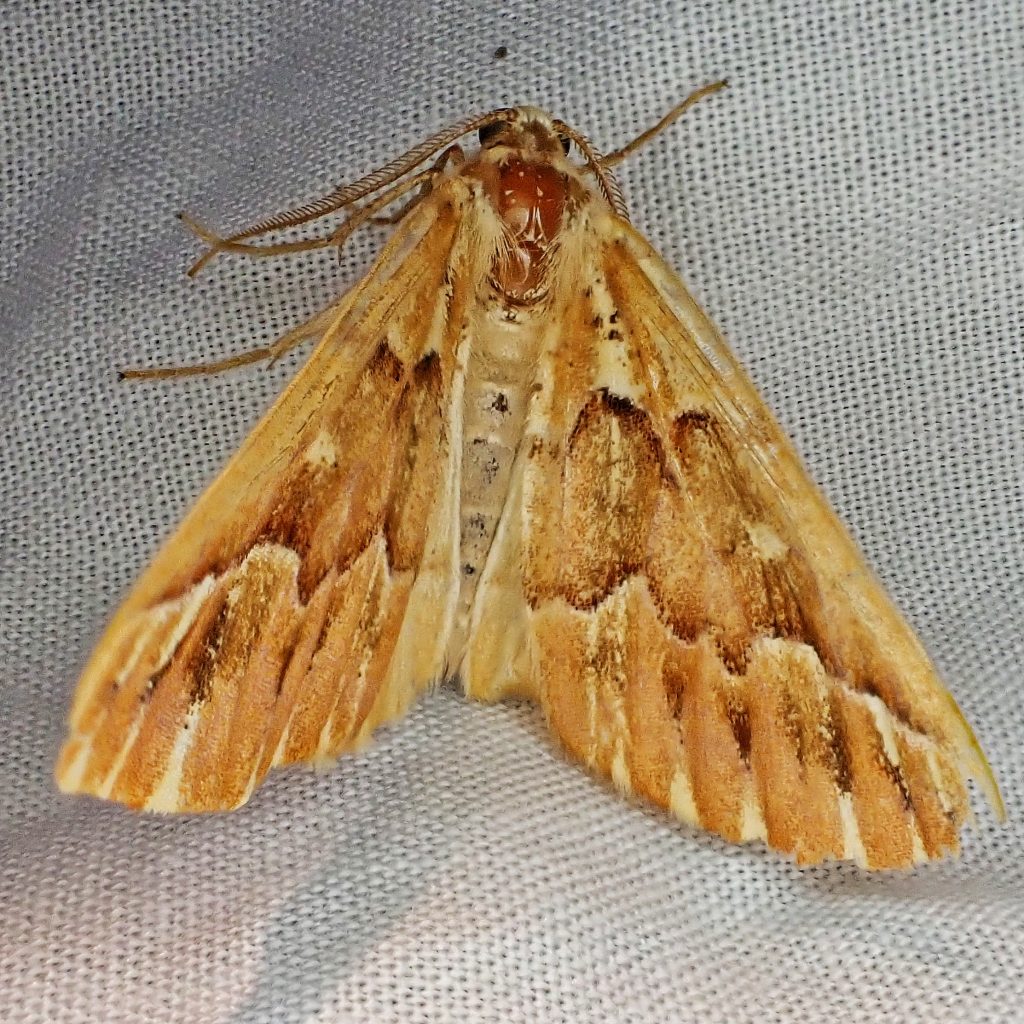
Adults active– Can be found flying from May into September, or even October, depending on elevation and latitude, with those higher up and farther north flying later in the year.
Life cycle– “This species overwinters in the egg stage. Larvae are present from June to September; pupation occurs in September” <em>Caripeta aequaliaria</em> Grote
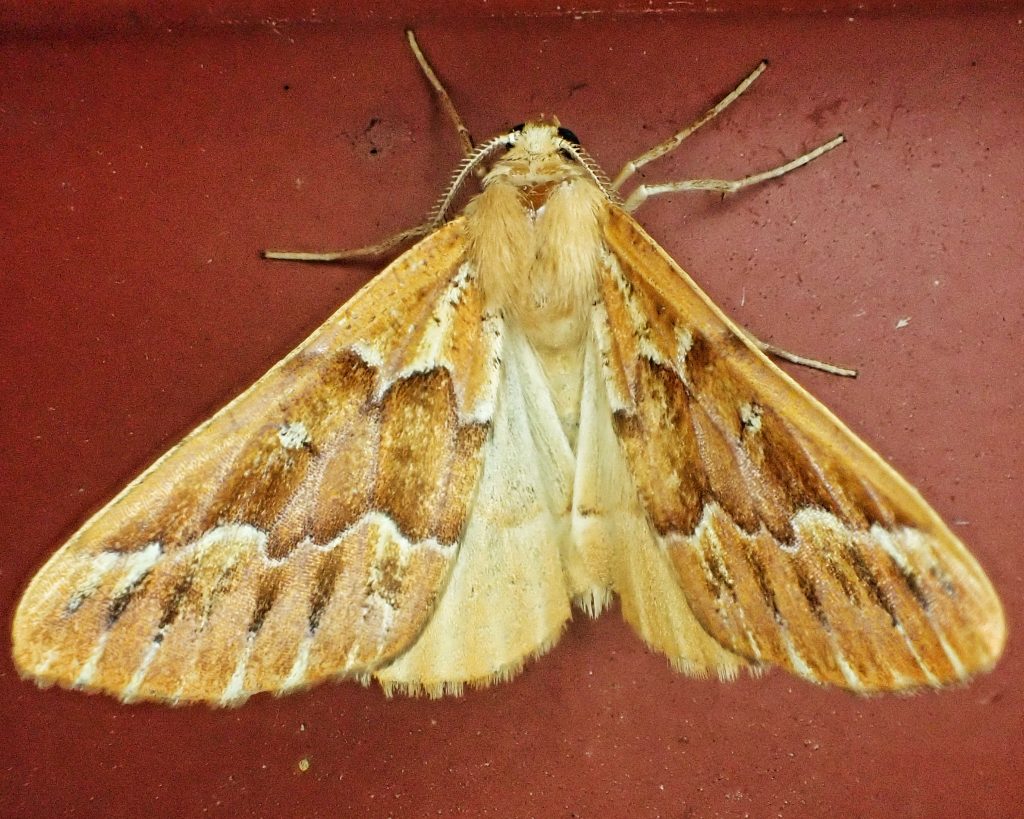
Etymology of names– Francis Walker did not give any clues whatsoever as to why he named this genus Caripeta. Going by possible root words from Latin, it may mean ‘coma squinting’ or ‘greedy rotting’ or ‘shrimp seeking’, none of which seem likely. The specific epithet aequaliaria seems to be from the Latin word for ‘smooth, even surface’, and I can’t find where, or even if, Grote explained this reference.
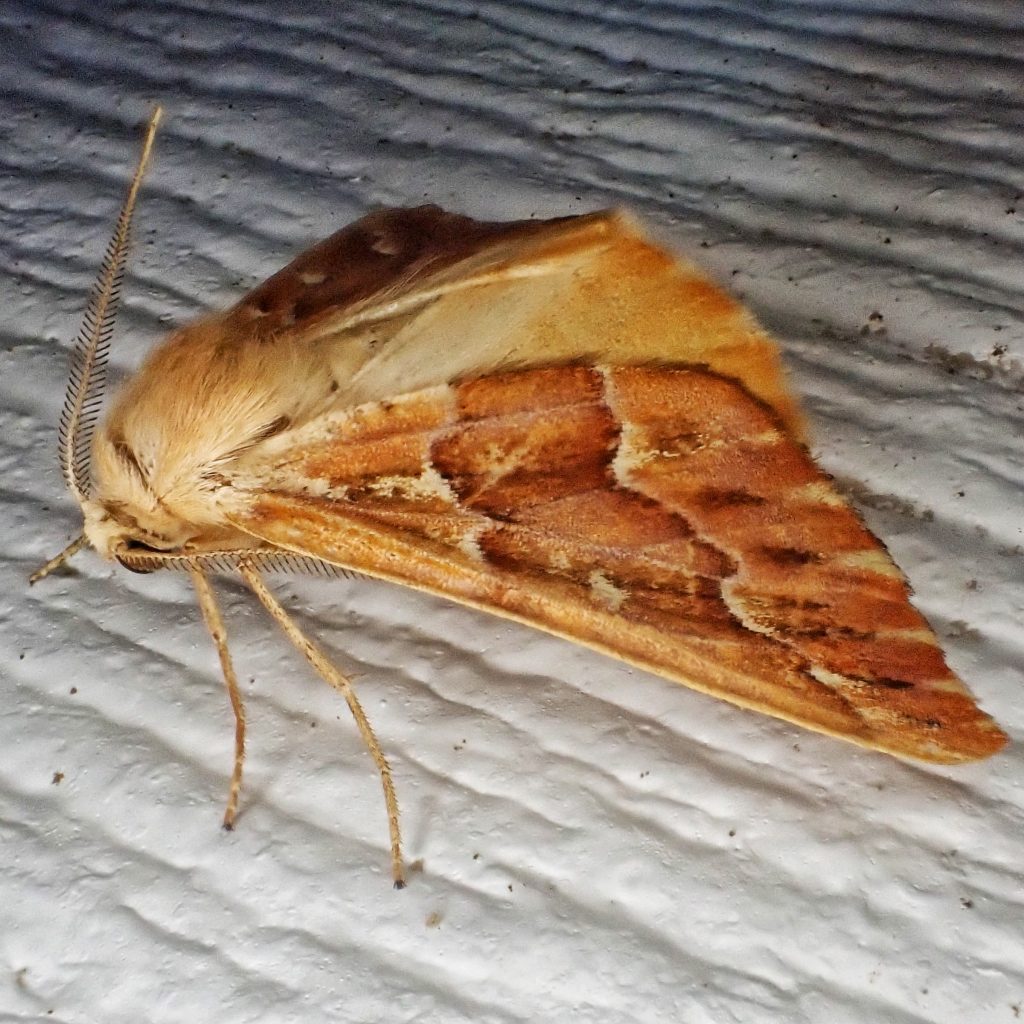
Species Caripeta aequaliaria – Red Girdle – Hodges#6865 – BugGuide.Net
Caripeta aequaliaria – University of Alberta Museums Search Site
<em>Caripeta aequaliaria</em> Grote
http://mothphotographersgroup.msstate.edu/species.php?hodges=6865
